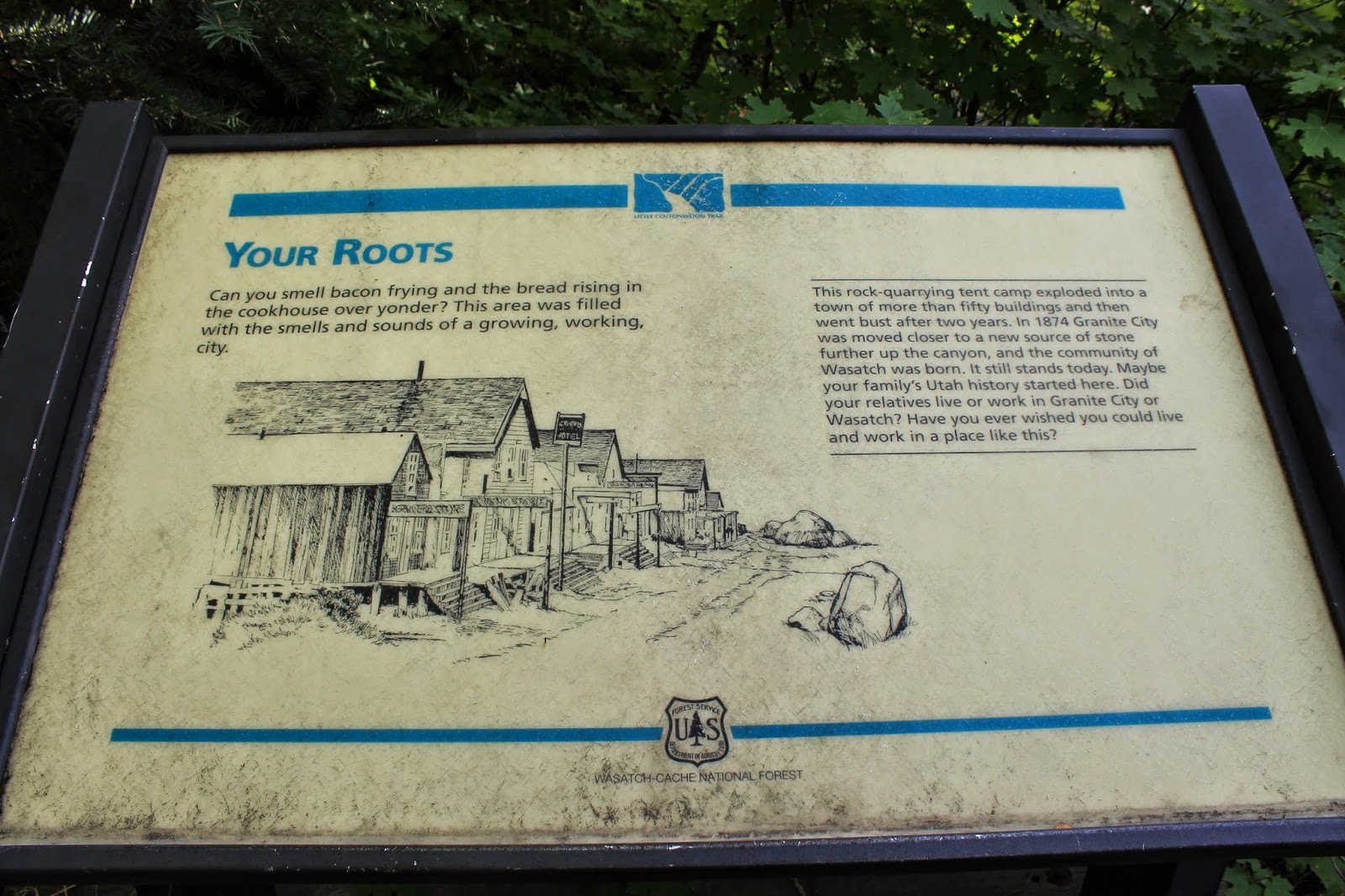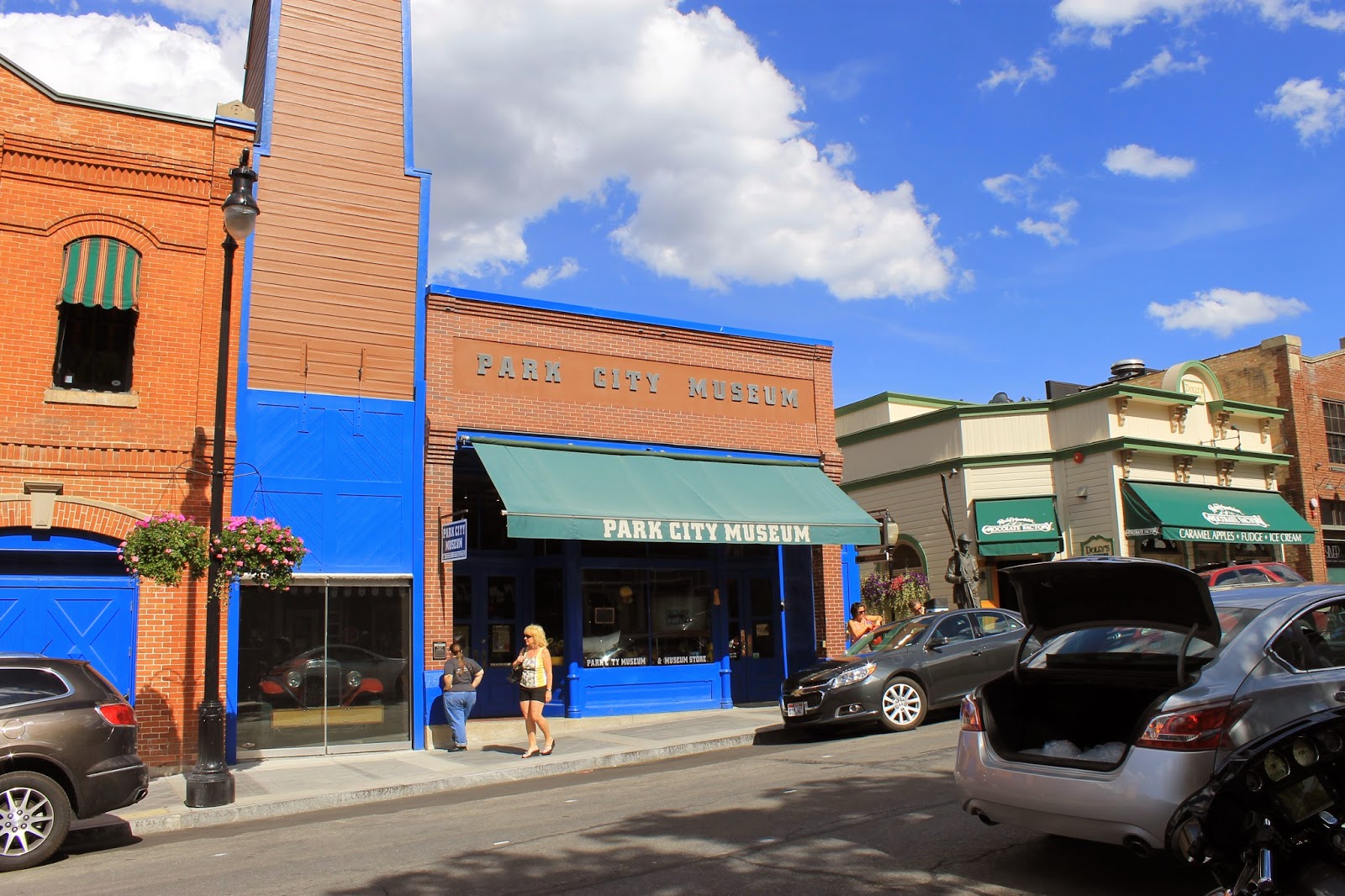In case you don't click on it to read it... During the turn of the 20th century thousands lived in the mouth of Little Cottonwood Canyon. The towns were Graniteville (yes, that's how they spelled it), Wasatch (which I had always thought was the name of the neighborhood that still stands there), Hogum, Tannersville, Central City, Alta (as in the ski resort. It's on my list to visit one of these weekends, so I won't add it below) and Emmaville (can you get a more Mormon sounding name?). I wandered digitalnewspapers.org again and found old newspaper stories of these towns! Yes! They existed and there's proof! So fun to find these! (Warning, I may split this post apart if I get to visit something for each of these towns.)
So a quick little bit of stories before I post a bunch of awesome pictures of granite.I apologize for the serious lack of information. I honestly was not looking for a ghost town on this visit (thus, I didn't look anything up). I was going to look at a granite quarry.
Emmaville: Maybe I spoke too soon. First story I found was (dated 1871) a letter to the editor of the Salt Lake Herald that Emma is popular with Mormon and Gentiles. He then talks about the furnaces in Emmaville and Granite[ville]. Here's a story that gives a glimpse into the life of one man and mentions a mine in Emmaville.
Emmaville was a good stopping point between Alta and Salt Lake City. "Emma Mine" is near Alta. I'll have to go find that. This town had stores, hotels, boarding houses, blackmith, livery and two saloons (definitely going to try to find it by Alta). Emmaville was a ghost before 1900.
Graniteville: I can't find anything yet. My searching keeps taking me to either the ghost town of Gransville in Tooele County or the ghost town of Graniteville in Montana.
Wasatch: I'm going to have to do more research on this one too.
Hogum: (No, google, I'm not misspelling Hyrum.) Well, apparently there's great skiing at Hogum's Fork in Little Cottonwood Canyon... give me some time. I'll find out about this one too.
Tannersville: So, apparently around 1851 John Tanner and his sons built a sawmill and boarding house for the mine and timber workers. The settlement was abandoned after the hotel burned down in 1872. I'm still looking to see if there are markers of any kind for this town.
Central City: I'm going to have to do more research on this one too.
And now for a bunch 'o' pictures!
 |
| Several of the signs could use a little maintenance. :( |
 |
| There's an old dam... and yes... I strayed off the path, but in my defense, the dried river looks like a trail |
 |
| There was broken concrete here and this random hollow post with wiring. What is this? Looks cool, tho. |
 |
| Practice?? |
 |
| There's an old pump in here. So much to see at the Quarry! Go check it out!! |
Bibliography:
Carr, Stephen L. The Historical Guide to Utah Ghost Towns. Salt Lake City: Western Epics, 1972.
http://miningutah.com/id253.html





















































